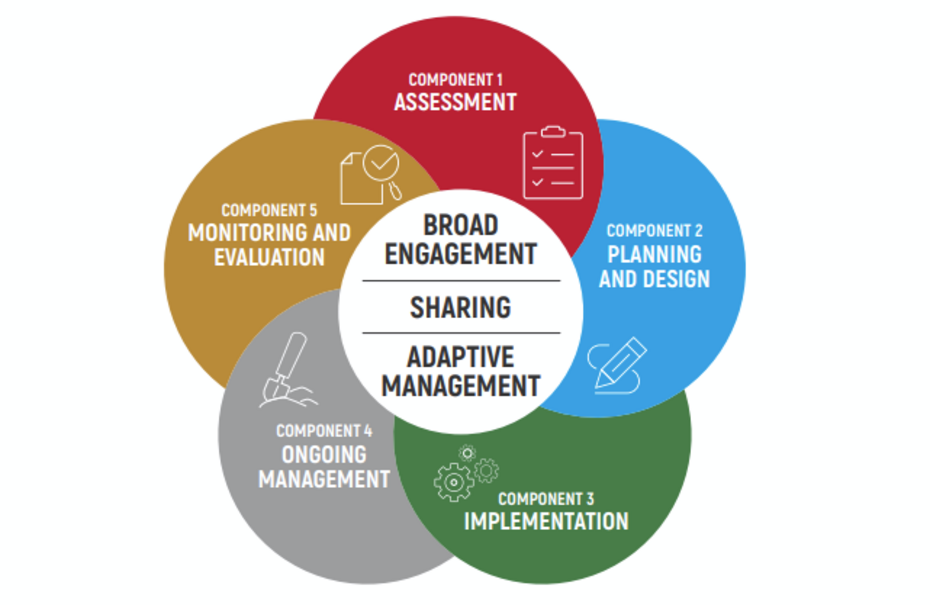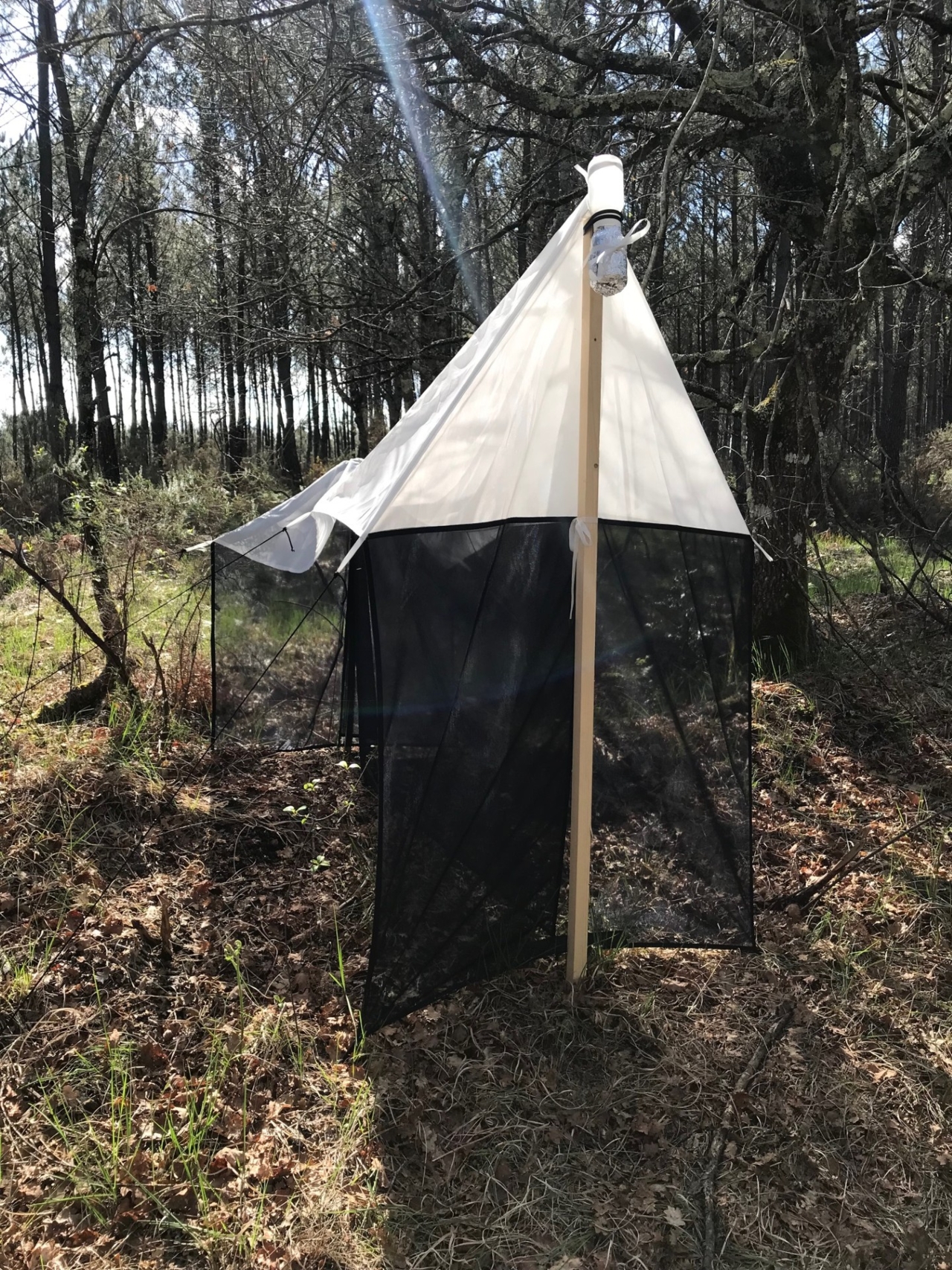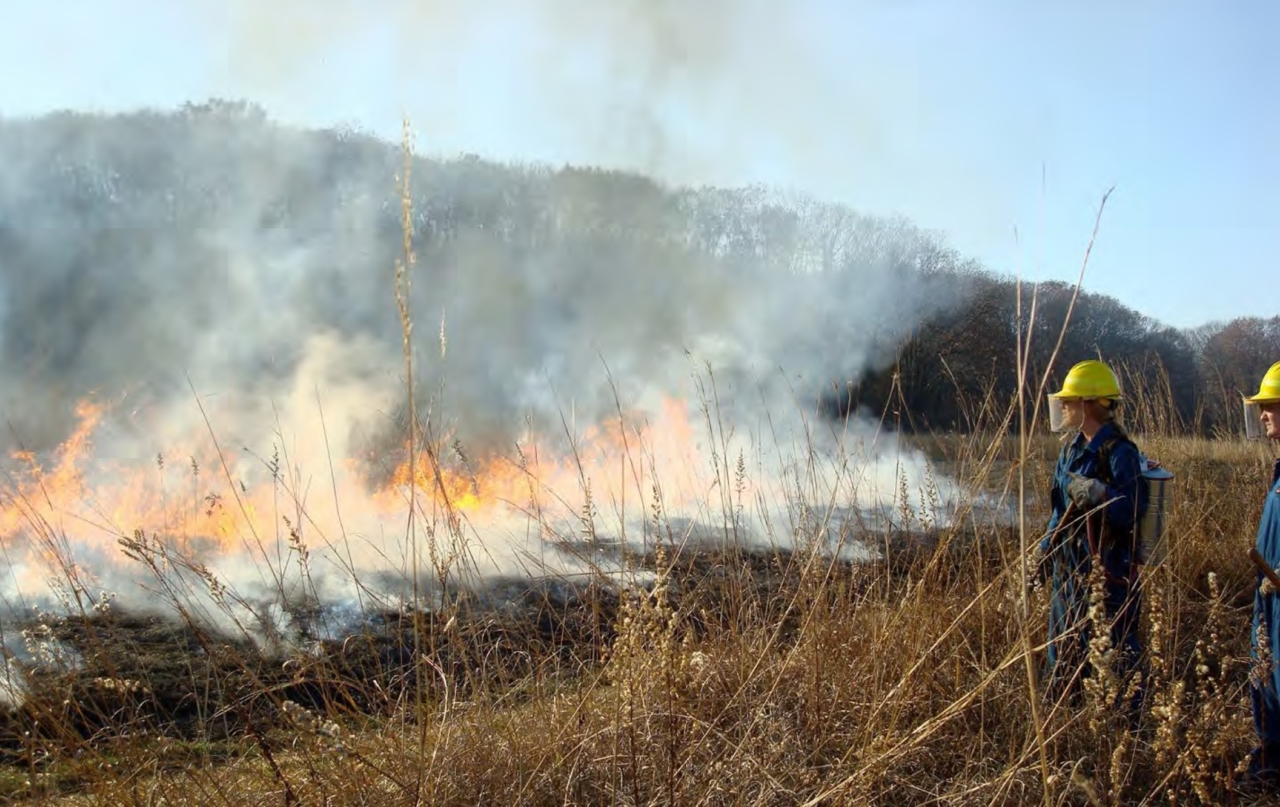
1.4 Reference Model

Use condition models to assess restoration impact, define goals, and track progress across multiple ecological indicators.
A reference model allows you to compare current forest conditions with reference conditions, helping you define degradation levels and set clear restoration goals. For conservation objectives, sites have typically been compared to undisturbed ecosystems or historical conditions in similar/local ecological conditions. With climate change and other increasing threats like new pests and pathogens or invasive species, such historic reference conditions need to be takenwith great caution, particularly when it comes to the question of tree species composition. Aspects like structural diversity, deadwood amounts, and presence of particular species or species groups can however give you good insights into the historic complexity and resilience of the system that should be restored.
For high-quality monitoring (see also chapter 5), and to be able to demonstrate real impact and effective investment of resources into restoration action, you need to address two questions: 1) are your measures of success significantly different after management intervention from a non-intervention scenario, and 2) how similar are your measures of success to the expected outcomes?
For the first, you need a Default Condition Model (DCM). It shows the development of sites that are not restored and where management continues as usual.
For the second one, you need a Reference Condition Model (RCM). This model shows the expected development of indicator values from the beginning of restoration until target values in mature high-quality habitats are reached. What type of habitat outcomes are plausible, and therefore what sites to include in the RCM will strongly depend on information available from any baseline monitoring (chapter 1.3), as well as the type of restoration actions proposed.
Both models need a set of sites to be measured. Sites for the Default Condition Model should have similar site capabilities (see also chapter 1.1) as the restoration sites. Sites for the Reference Condition Model should be associated with best-practice restoration approaches and represent a pathway to the desired outcomes.
A restoration project will be on a good pathway to have positive impact and have additionality only when it is considered highly unlikely that indicator values stay within the range of the Default Condition Model. It should also only claim to be successful if the indicators fall within the range of the Reference Condition Model.
Ecosystem restoration cannot be assessed by a single indicator, and therefore it is important for you to recognize that multiple indicators will be required to ensure success. A project may achieve rapid success for some indicators that diverge quickly (see Indicator A in figure above), and simultaneously still be for some more time within the range of Default conditions for other indicators that diverge later as the habitat matures (see Indicator B in figure above).
Related resources
Standards of Practice to Guide Ecosystem Restoration
The United Nations Decade on Ecosystem Restoration 2021–2030 recognizes the critical need to prevent, halt and reverse the degradation of the world’s ecosystems. Effective restoration of degraded ecosystems is of paramount importance for recovering biodiversity, ecosystem health and integrity, ecosystem goods and services, climate-change mitigation and human health and well-being. UN Decade partners, through a consultative process, offered ten principles for ecosystem restoration to create a shared vision and increase the likelihood of achieving the highest level of recovery possible.
EFISCEN-Space model
EFISCEN-Space is an empirical European forest model that simulates development of forest resources. The model allows to assess and evaluate most likely trajectories of future forest development including sustainable forest management regimes, wood production possibilities, trade-offs between different forest ecosystem services under alternative management regimes and climate change.
International principles and standards for the practice of ecological restoration
Ecological restoration supports biodiversity, human wellbeing, food and water security, and climate resilience. The updated International Principles and Standards provide a framework of eight guiding principles, tools, and best practices to improve restoration design, monitoring, and outcomes. By integrating science, traditional knowledge, and stakeholder engagement, these Standards aim to deliver lasting ecological, social, and economic benefits worldwide.
Ecological Restoration Project Monitoring
This EPA publication focuses on the Agency’s efforts to address environmental degradation and promote restoration of ecosystems across the United States. It reviews programs and policies aimed at cleaning up contaminated sites, restoring air and water quality, rehabilitating damaged lands and supporting healthier communities. By combining regulatory actions with collaborative initiatives, the document illustrates how restoration contributes not only to ecological health but also to public safety, economic vitality, and long-term resilience.






